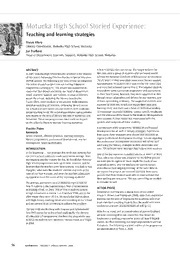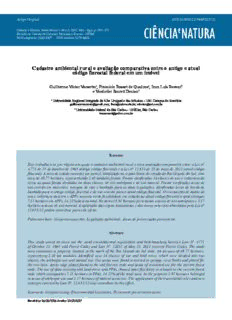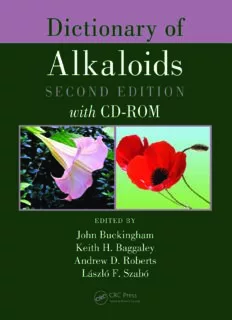
Dictionary of Alkaloids, 2nd Edition PDF
Preview Dictionary of Alkaloids, 2nd Edition
Dictionary of Alkaloids SECOND EDITION with CD-ROM Dictionary of Alkaloids S E C O N D E D I T I O N with CD-ROM EDITED BY John Buckingham Keith H. Baggaley Andrew D. Roberts László F. Szabó Boca Raton London New York CRC Press is an imprint of the Taylor & Francis Group, an informa business CRC Press Taylor & Francis Group 6000 Broken Sound Parkway NW, Suite 300 Boca Raton, FL 33487-2742 © 2010 by Taylor and Francis Group, LLC CRC Press is an imprint of Taylor & Francis Group, an Informa business No claim to original U.S. Government works Printed in the United States of America on acid-free paper 10 9 8 7 6 5 4 3 2 1 International Standard Book Number: 978-1-4200-7769-8 (Hardback) This book contains information obtained from authentic and highly regarded sources. Reasonable efforts have been made to publish reliable data and information, but the author and publisher cannot assume responsibility for the validity of all materials or the consequences of their use. The authors and publishers have attempted to trace the copyright holders of all material reproduced in this publication and apologize to copyright holders if permission to publish in this form has not been obtained. If any copyright material has not been acknowledged please write and let us know so we may rectify in any future reprint. Except as permitted under U.S. Copyright Law, no part of this book may be reprinted, reproduced, transmitted, or utilized in any form by any electronic, mechanical, or other means, now known or hereafter invented, including photocopying, microfilming, and recording, or in any information storage or retrieval system, without written permission from the publishers. For permission to photocopy or use material electronically from this work, please access www.copyright.com (http://www.copyright.com/) or contact the Copyright Clearance Center, Inc. (CCC), 222 Rosewood Drive, Danvers, MA 01923, 978-750-8400. CCC is a not-for-profit organization that provides licenses and registration for a variety of users. For organizations that have been granted a photocopy license by the CCC, a separate system of payment has been arranged. Trademark Notice: Product or corporate names may be trademarks or registered trademarks, and are used only for identification and explanation without intent to infringe. Library of Congress Cataloging-in-Publication Data Dictionary of alkaloids / editors, John Buckingham … [et al.]. -- 2nd ed. with CD-ROM p. cm. Includes index. ISBN 978-1-4200-7769-8 (hardcover : alk. paper) 1. Alkaloids--Dictionaries. I. Buckingham, J. II. Title. RS431.A53D53 2010 615’.32103--dc22 2009031445 Visit the Taylor & Francis Web site at http://www.taylorandfrancis.com and the CRC Press Web site at http://www.crcpress.com Table of Contents Foreword . . . . . . . . . . . . . . . . . . . . . . . vii M. . . . . . . . . . . . . . . . . . . . . . . . . . . .1177 The Editors. . . . . . . . . . . . . . . . . . . . . . .ix N. . . . . . . . . . . . . . . . . . . . . . . . . . . .1343 Introduction . . . . . . . . . . . . . . . . . . . . . .xi O . . . . . . . . . . . . . . . . . . . . . . . . . . . .1401 Classification of Structural Types . . . . . . xxi P . . . . . . . . . . . . . . . . . . . . . . . . . . . .1445 Dictionary Entries Q . . . . . . . . . . . . . . . . . . . . . . . . . . . .1631 A . . . . . . . . . . . . . . . . . . . . . . . . . . . . . ..1 R . . . . . . . . . . . . . . . . . . . . . . . . . . . .1647 B . . . . . . . . . . . . . . . . . . . . . . . . . . . . .261 S . . . . . . . . . . . . . . . . . . . . . . . . . . . .1687 C . . . . . . . . . . . . . . . . . . . . . . . . . . . . .341 T . . . . . . . . . . . . . . . . . . . . . . . . . . . .1815 D. . . . . . . . . . . . . . . . . . . . . . . . . . . . .523 U. . . . . . . . . . . . . . . . . . . . . . . . . . . .1965 E . . . . . . . . . . . . . . . . . . . . . . . . . . . . .699 V . . . . . . . . . . . . . . . . . . . . . . . . . . . .1977 F . . . . . . . . . . . . . . . . . . . . . . . . . . . . .761 W. . . . . . . . . . . . . . . . . . . . . . . . . . . .2015 G. . . . . . . . . . . . . . . . . . . . . . . . . . . . .805 X . . . . . . . . . . . . . . . . . . . . . . . . . . . .2021 H. . . . . . . . . . . . . . . . . . . . . . . . . . . . .849 Y . . . . . . . . . . . . . . . . . . . . . . . . . . . .2029 I. . . . . . . . . . . . . . . . . . . . . . . . . . . . .1007 Z . . . . . . . . . . . . . . . . . . . . . . . . . . . .2035 J. . . . . . . . . . . . . . . . . . . . . . . . . . . . 1073 Name Index . . . . . . . . . . . . . . . . . . . .2043 K. . . . . . . . . . . . . . . . . . . . . . . . . . . .1085 Compound Index Contents. . . . . . . . . .2243 L . . . . . . . . . . . . . . . . . . . . . . . . . . . .1107 Type of Compound Index. . . . . . . . . . .2245 v Foreword Plants containing alkaloids have served humankind since ancient times. Indeed, some of the oldest surviving written records of commercial transactions involving medicinal plants are of alkaloid-containing plants. For thousands of years, indigenous groups around the world discovered, through self-experimentation with locally availableplantextracts,thattheycouldprovidematerialsforhuntingprey,culinaryenhancement,amelioration from disease, relief of pain, and healing. These plants contributed significantly to the survival of indigenous groups throughout history. This same process of low-throughput clinical screening also identified many plants which were to be avoided because of their toxicity, again due to alkaloids. It is the oral and written records of theseinvestigationswhichsurvivetodayandformthebasisofbothclinicalcareinmuchoftheworldandaspects of contemporary drug discovery. A transition occurred at the beginning of the 19th century when investigations on the most significant medicinal and toxic plants of Europe commenced, these included studies on opium, colchicum, nux vomica, ipecac,belladonna,andpepper.Asittranspired,alloftheisolated,biologicallyactivecompoundswerealkaloids, anditwastheseinvestigationswhichinitiatedthediversestudiesofalkaloidsasaclassofnaturalproductswhich continue today. Since those early times, there have been six important phases to the study of alkaloids. The first was the tremendousincreaseinthenumberofstructurallyuniqueandcomplexalkaloidsisolatedfromplants,structures which defined the new field of heterocyclic chemistry. The second was the dramatic reduction in time and the amount of material required to determine the precise stereochemical and conformational structure of an individualalkaloidasaresultoftheadvancesinspectroscopicandchromatographictechniqueswhichpermitted ever smaller samples to be structurally characterized. Third, there evolved the understanding that groups of structurally similar alkaloids could, sometimes, be related to each other based on one or two biosynthetic precursorsfromwhichchemicallyrationalmetabolicschemescouldbeusedtogeneratetheplethoraofalkaloid skeleta and structures. Fourth, there was the recognition that this structural diversity, skeletal complexity, and stereo-uniquenesswereatthesametimeabenefitandabane.Whiletheactivitycouldbeexquisite,alkaloidsmay also have significantly modulated biological activity based on a transformation at a single functional group or stereochemical center. Fifth, as more complex alkaloids were structurally elucidated they became challenging targets for synthetic organic chemists, and continue to be the basis for the stimulation of numerous brilliant synthetic strategies and innovations in organic chemistry. Finally, as knowledge of the biology associated with alkaloidsgrewinbothbreadthanddepth,initiallyattheinvivolevelandeventuallyatthemolecularlevel,some alkaloids were established to be archetypal entity for a particular biological response. Consequently, in this 200-year period, many alkaloids became critical components of the global pharmaceutical armamentarium, and tremendous healing has resulted from their clinical application. As our foodandbeveragepracticeshaveevolved, alkaloids havebecome acorecomponentofeverydaylifeforalmost everyoneontheplanetonamomenttomomentbasis,andcaffeine,capsaicin,nicotine,theobromine,adrenaline, dopamine, serotonin, etc. are representative examples. Many of the colors of flowers and vegetables are due to alkaloids, and at the same time, alkaloids represent enormous and potent biological power. Sometimes this powercanbeamelioratedbydosereductiontoproducehealthbeneficentagents(forexample,theergotalkaloids and aconitine); in other instances they must simply be avoided by both animals and humans, such as those in manytoxicplants,animals,andfungi.Alkaloidsalsohaveledmedicinalchemistsdownproductivepathwaysfor drug development, although it is seldom appreciated that the molecular phylogeny of many synthetic drugs can be traced to classical alkaloids such as morphine and atropine. At the same time, there is a ‘‘dark side’’ to alkaloids, because at least three - morphine, cocaine, and nicotine - have powerful social implications causing tremendoushumansufferingthroughaddiction,diseasedevelopment,andwarswhichcontinueunabatedtoday. It is this good, bad, and downright ugly aspect to alkaloids which has fascinated so many scientists forso long. Asaglobalsocietywedoindeedhavethislove-haterelationshipwithalkaloidsunlikethatofanyothergroupof natural products. Asmentioned,withtheriseofspectroscopybeginninginthe1950s,interestdevelopedinexaminingalkaloids from wider sources than higher plants. Indeed, it appears now that almost every class of organism, insects, reptiles, birds, fungi, bacteria, the diversity of marine organisms, and mammals, including humans, all produce alkaloids. The last twenty years have witnessed an explosion in the numbers and the structural diversity of alkaloids from these sources, and these developments are dramatically reflected in this updated compilation. vii From a chemical perspective, it transpires that there is almost no overlap in the structural diversity of plant, fungal,andmarinealkaloids.Eachisachemicallybrilliantworlduntoitself.Thus,onewouldnotexpecttofind a monoterpenoid indole alkaloid in a marine sponge, nor a manzamine alkaloid in a tropical liana. This unimaginable structural diversity places the alkaloid sciences on the cusp of a deeper understanding of their biosynthetic formation. While significant and successful efforts are underway to elucidate pathways and isolate genes which are related to both plant and fungal alkaloids, for marine organisms this aspect is completely unexplored, although the most spectacular new skeleta and potent biological activities are derived from these marine sources. Thepasttwentyyearshavewitnessedtheevolutionofthreenewareasofalkaloidchemistryandbiology.The firstisthatoftheintegrityofalkaloidbiosynthesis.AlkaloidssuchtheansamacrolidesfromMaytenusandfrom Colubrina,aswellastheergotalkaloidsoftheConvolvulaceaearenowestablishedtobederivedbiosynthetically from parasitic or symbiotic fungal organisms, not through the metabolic pathways of the host plant. Second, structuralconclusionsregardingindividualalkaloidscanchange;ana-hydroxygroupofyesterdaycanbecomea b-hydroxy today based on refined chemical, spectroscopic, and crystallographic conclusions. As one looks throughtheDictionaryofAlkaloids,itisimportanttobeawarethattherearemanyexampleswherethesynthesis ofaproposedstructurehasfailedtosupportthatstructure,orwherenewspectroscopicevidencedoesnotsupport aproposedstructure.Whileinsomecasesthishasledtorefinementofthestructure,inothersadanglingquestion remains as to the true identity of the natural alkaloid. Third, there is the connection of alkaloids to the biotechnology revolution, and the marvelous progress that has been made for certain alkaloid pathways in elucidating the enzymes and genes of alkaloid biosynthesis. What, then, is the ‘‘fit’’ for the Dictionary of Alkaloids, and why is it such an important resource for researchers?Burgeoningeffortsatstructureelucidationandbiologicalexperimentationmakeitextremelydifficult to quickly find key literature citations to original sources of information on individual compounds. It was recognized some years ago that there was a core global need for information systems on the isolation, spectral properties, and biological properties of alkaloids. The Dictionary of Alkaloids is a critical, absolutely essential componentinfillingthatneed.Itistheonlyaccumulation intheworldofthetaxonomy,chemistry,andbiology of alkaloids derived from all sources. It provides extensive information to references for the isolation, spectroscopy, and biology of an individual alkaloid, and to its other attributes and uses. Importantly, the alkaloids are frequently collected as a group based on a parent structure. This simplifies the presentation, and accumulatesalkaloidshavingquitedifferenttrivialnames.Thevolumeiseasytouse,andthediverseindexesplace themostsignificantinformationatone’sfingertips.Itisauniqueresource,andonewhichisindispensabletoany alkaloid chemist and biologist. The inclusion of a fully substructure searchable CD-ROM in this second edition makes the resource even more valuable. In spite of the vast range of studies of alkaloids over the years, much remains to be done. There are many plantfamilieswhichareknowntocontainalkaloidswherethealkaloidsremaintobeidentified;thereareuntold marine organisms and tens of thousands of microorganisms with unknown alkaloids. There is the genetics of alkaloid biosynthesis in more diverse organisms, and the tremendous potential for being able to produce alkaloids through isolated and stabilized systems in a sustainable manner. The key justification for alkaloid research, though, must be relevance to the enhancement of public health. For many years, justification for alkaloidresearch wasbased ontheir novelty;there was norelationship tobiology.Indeed, it was shown several years ago that about 75% of all plant alkaloids had never been evaluated in a single bioassay. There remains a critical need for the wider biological study of known and new alkaloids in high throughput screening systems. Alkaloids will continue to have a critical role to play in the health of the Earth and of its inhabitants for the foreseeablefuture.Theyrepresentasignificantaspectintheevolvingconceptofsustainabledrugsandbiological agents.However,onlythroughtheextensivecollaborationoftaxonomists,chemists,biologists,pharmacologists, formulation chemists, and clinicians can this potential be realized. Inthe12thcentury,accordingtoMatthewFoxin‘‘OriginalBlessing,’’itwasSaintHildegardofBingenwho, indiscussingtherelationshipofhumankindandNatureinphilosophicalandpracticalterms,suggestedthat‘‘All nature is at the disposal of humankind. We are to work with it. For without it, we cannot survive.’’ Rather like humankind, alkaloids, in all of their stunningly beautiful complexity and diversity, are an integral and essential aspect of nature with which we must work to survive. Geoffrey A. Cordell, Ph.D. Professor Emeritus Evanston, IL USA viii The Editors John Buckingham is a former lecturer in organic chemistry at the University of London. He has been involved with the Chapman & Hall (now CRC) chemical database since its inception in 1980, initially as a Chapman & Hall employee, more recently as Editorial consultant. From the database has been producedvarious editions of theDictionaryofOrganic CompoundsandtheDictionaryofNaturalProducts(bothofwhichhavebeenforsome years solely electronic). In addition, he compiled (with I.W. Southon) the first edition of the Dictionary of Alkaloids(printonly)in1989.HeisalsotheauthorofthepopularsciencebooksChasingtheMoleculeandBitter Nemesis; The Intimate History of Strychnine KeithH.BaggaleyobtainedhisBSc(Hons)andPhDdegreesfromtheUniversityCollegeofWales,Aberystwyth followed by a post-doctoral fellowship in chemistry at the Royal Institute of Technology, Stockholm, Sweden, with Professor Holger Erdtman and Professor Torbjorn Norin. He then took up a Junior Research Fellowship withProfessorDavidOllisattheUniversityofSheffieldbeforejoiningBeechamResearchLaboratoriesinSurrey as a research chemist. At Beecham he worked on discovery projects concerned with cholesterol lowering drugs, platelet aggregation inhibitors and semisynthetic antibiotics as well as research on clavulanic acid biosynthesis. He has been an editor of the Chapman & Hall dictionaries since 1996. Andrew D. Roberts took his BSc (Hons) degree at Trent Polytechnic, Nottingham (now Nottingham Trent University), UK 1973(cid:1)1977 and completed studies in drug discovery projects at Pfizer (Sandwich) UK. He contributed to the Dictionary of Organic Compounds (Chapman & Hall) published in 1982 and has since been a Contributing Editor for other projects including the Dictionary of Antibiotic Substances (1988), Dictionary of Drugs (1990) and has since been an Editor on the Dictionary of Natural Products which was first published in 1993. La´szloo´ Ferenc Szabo´ was born in Szentgottha´rd (Hungary) on April 15, 1931 and studied in Pharmacy at University of Medicine, Budapest, 1949(cid:1)54. Member of the Department of Medicinal Chemistry, later of the Department of Organic Chemistry of the Semmelweis University Budapest (scientific assistant, associate professor, ordinary professor), director of the same department 1977(cid:1)1996, Ph.D. in organic chemistry, Doctor habilitatus. Research visitor at Universite´ Libre de Bruxelles, 1972/73, several times in Merseburg (Germany). Presently professor emeritus of the Semmelweis University. Fields of activity: chemistry of natural products, mainlyindolealkaloids(strychnine,strictosidine)andterpenoids(iridoids,secologanin),biogeneticformationof natural products, heterocyclic chemistry, mainly quinolizine compounds, polymer supported synthesis of small molecules, theoretical problems of organic chemistry (PMO theory, graph analysis). IN HOUSE EDITORIAL TEAM Prof. R.A. Hill, University of Glasgow Dr A.M. Hodgson, Consultant Dr F.M. Macdonald, CRC Press, Boca Raton Dr S.P. Walford, CRC Press, London Additional data collected by contributors to the CRC Chemical Database ix
Description:The list of books you might like

Credence

The Subtle Art of Not Giving a F*ck

The 48 Laws of Power

Haunting Adeline
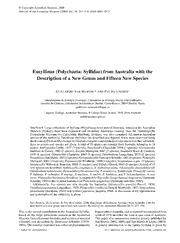
Eusyllinae (Polychaeta: Syllidae) from Australia with the description of a new genus and fifteen new species
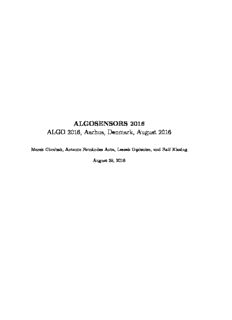
ALGOSENSORS 2016 ALGO 2016, Aarhus, Denmark, August 2016
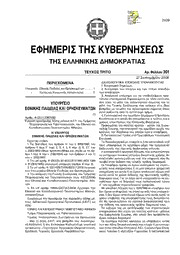
Greek Government Gazette: Part 3, 2006 no. 301
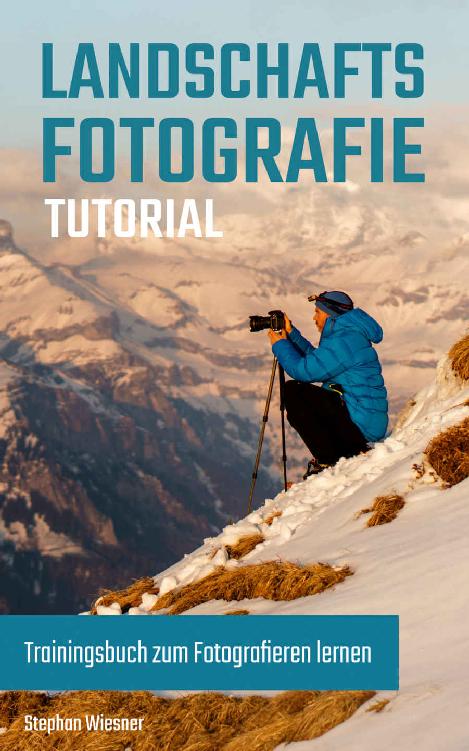
Landschaftsfotografie Tutorial: Trainingsbuch zum Fotografieren lernen (German Edition)

The Art of Selfishness
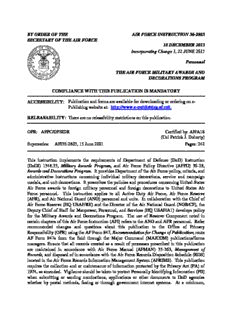
BY ORDER OF THE SECRETARY OF THE AIR FORCE AIR FORCE INSTRUCTION 36-2803 18 ...

Die Klavierspielerin: Lektüre- Und Interpretationshilfe
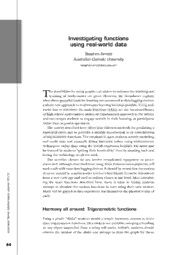
ERIC EJ744021: Investigating Functions Using Real-World Data
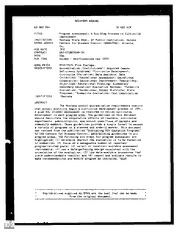
ERIC ED362564: Program Assessment: A Six-Step Process to Curriculum Improvement.
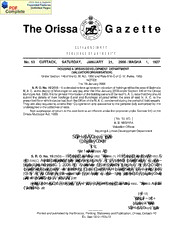
Odisha Gazette, 2006-01-07, No. 53
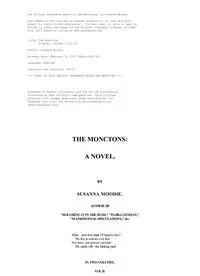
The Monctons A Novel Vol II by Susanna Moodie

ERIC ED381413: Emancipatory Education and Action Research. Action Research Series No. 1.
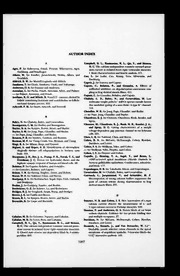
The Journal of General Physiology 1993: Vol 102 Index
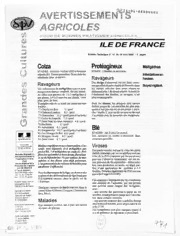
Avertissements Agricoles - Grandes cultures - Ile de France - 2006 - 12
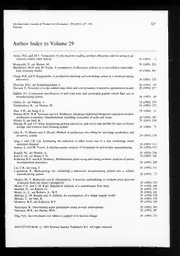
International Journal of Production Economics 1993: Vol 29 Index
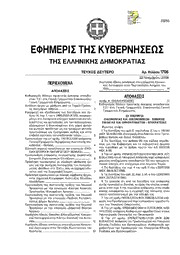
Greek Government Gazette: Part 2, 2006 no. 1706
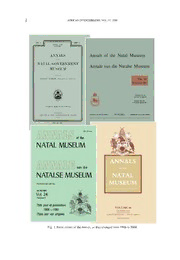
The Natal Museum and its journals : celebrating a century of publication, 1906-2005

